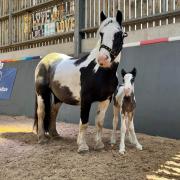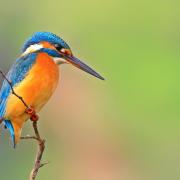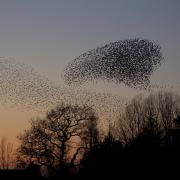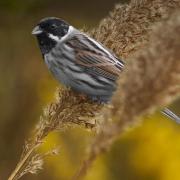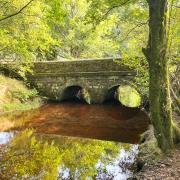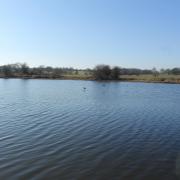A Lancashire photographer spent hours capturing striking images at one of the county’s top visitor attractions

Once upon a time, photographers would encourage children with a bad case of the fidgets to sit still by calling out ‘Watch the Birdie’ just as they took their picture. The phrase has a rather different meaning for Lancashire cameraman Glynn Ward.

If Glynn hadn’t been watching the birdie, he might be short of an ear.
The Lancashire Life regular is often seen at fashion shoots, capturing images of pop stars and covering other major events around the county. But this latest assignment presented him with a new set of challenges.
It involved him spending many hours in all weathers watching an exceptionally striking flock of birdies and he has created an exclusive window into the world of the raptor.
Using advanced camera technology, incredibly fast shutter speeds, considerable skill and a level of patience rarely found in a Yorkshireman, Glynn has captured birds in great detail and in some startlingly different poses.
The action took place at Turbary Woods, a non-profit making bird of prey sanctuary run by volunteers at Whitestake, near Preston. The centre has around 80 birds – from the UK and more exotic specimens - that have been dumped or damaged. The hopeless cases are put out of their misery and rest of the native species are nursed back to health for life in the wild.
‘This was certainly one of my most technically difficult assignments but it was also one of my most interesting,’ said Glynn. ‘I’d never done anything quite like this before.
‘My first problem was working out how they flew from the handler to the perches. Some dipped and flew close to the ground, others went high. Some were slow and graceful, some were sleek and fast.
‘I also had to spend some time with each bird so they got use to me. After that, it was patience.’ The best period to photograph the birds was when they were being fed. That limited the time he had with each one because a full bird gets heavy and tired.
‘To get the birds to fly directly at me, the handler stood behind me with meat on his arm and I crouched down in front of him or I stood to one side,’ he added.
‘On some shots I had to hold my nerve as a bird with a five foot wingspan and talons as big as my fist flew towards me at 25mph.’
Glynn came through unscathed but he was in safe hands thanks to senior volunteer Roy Morris and his dozen or so colleagues.
Roy explained that they managed to rehabilitate around 60 per cent of the birds, many exotic creatures bred in someone’s home or dumped from a disbanded collection.
The volunteers regard them as wild animals and never as pets. ‘We have a strong ethical code of conduct and don’t agree with keeping birds with a wing, eye or leg missing in captivity,’ said Roy.
Just because they aren’t pets, that doesn’t stop the volunteers having their favourites such as Knowley, an orphaned tawny owl, now seven years old and one of the stars of the Turbary flying display team.
Like most small boys, Roy first got interested in birds by collecting eggs back in the 1970s. But his interest was really fired when he saw the film Kes.
‘I made my mind up that one day I would own and train a kestrel, but never imagined I would become a zoo keeper or help to care for such a varied and numerous collection.’
Roy’s interest turned to tawny owls during childhood camping trips to Betws-y-Coed in Snowdonia. ‘I will always vividly remember hearing the eerie night calls they made. It took me until I was about 11 years old before I found out that it was the call of the tawny owls. Even though they are the most common owl, I find them the most fascinating.’
Earlier his year Turbary became the number one attraction in Lancashire on Tripadvisor. This has seen attendances treble over previous years and has helped finance 15 new aviaries.
‘We also provide a unique one-to-one flying experience,’ added Roy. ‘Visitors can pre-book an afternoon and fly up to ten birds. It’s a very popular day out.
‘We are also very popular with school educational shows. Many schools, including some in Manchester and Cheshire, invite us to attend every year for the new intake of children.
‘I find educating the young children especially rewarding, seeing how happy and mesmerised they look when I fly my tawny owl and barn owl free in the school hall. We also teach them about habitats and behaviour.
‘It is something that the children will always remember, and very often triggers a life-long interest in birds.’
Just like one small boy back in the 1970s.
Turbary Woods is open all year and you can find out about times and entry fees by logging on to turbarywoods.co.uk.




